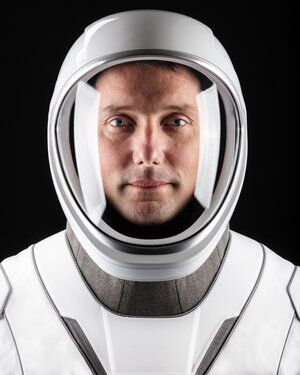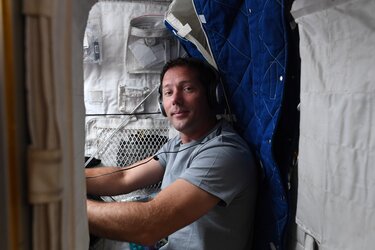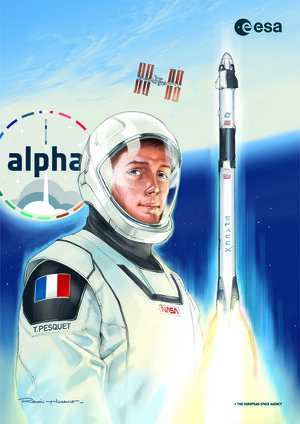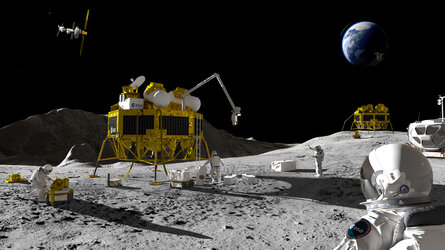Accept all cookies Accept only essential cookies See our Cookie Notice

About ESA
The European Space Agency (ESA) is Europe’s gateway to space. Its mission is to shape the development of Europe’s space capability and ensure that investment in space continues to deliver benefits to the citizens of Europe and the world.
Highlights
ESA - United space in Europe
This is ESA ESA facts Member States & Cooperating States Funding Director General Top management For Member State Delegations European vision European Space Policy ESA & EU Space Councils Responsibility & Sustainability Annual Report Calendar of meetings Corporate newsEstablishments & sites
ESA Headquarters ESA ESTEC ESA ESOC ESA ESRIN ESA EAC ESA ESAC Europe's Spaceport ESA ESEC ESA ECSAT Brussels Office Washington OfficeWorking with ESA
Business with ESA ESA Commercialisation Gateway Law at ESA Careers Cyber resilience at ESA IT at ESA Newsroom Partnerships Merchandising Licence Education Open Space Innovation Platform Integrity and Reporting Administrative Tribunal Health and SafetyMore about ESA
History ESA Historical Archives Exhibitions Publications Art & Culture ESA Merchandise Kids Diversity ESA Brand CentreLatest
Space in Member States
Find out more about space activities in our 23 Member States, and understand how ESA works together with their national agencies, institutions and organisations.
Science & Exploration
Exploring our Solar System and unlocking the secrets of the Universe
Go to topicAstronauts
Missions
Juice Euclid Webb Solar Orbiter BepiColombo Gaia ExoMars Cheops Exoplanet missions More missionsActivities
International Space Station Orion service module Gateway Concordia Caves & Pangaea BenefitsLatest
Space Safety
Protecting life and infrastructure on Earth and in orbit
Go to topicAsteroids
Asteroids and Planetary Defence Asteroid danger explained Flyeye telescope: asteroid detection Hera mission: asteroid deflection Near-Earth Object Coordination CentreSpace junk
About space debris Space debris by the numbers Space Environment Report In space refuelling, refurbishing and removingSafety from space
Clean Space ecodesign Zero Debris Technologies Space for Earth Supporting Sustainable DevelopmentLatest
Applications
Using space to benefit citizens and meet future challenges on Earth
Go to topicObserving the Earth
Observing the Earth Future EO Copernicus Meteorology Space for our climate Satellite missionsCommercialisation
ESA Commercialisation Gateway Open Space Innovation Platform Business Incubation ESA Space SolutionsLatest
Enabling & Support
Making space accessible and developing the technologies for the future
Go to topicBuilding missions
Space Engineering and Technology Test centre Laboratories Concurrent Design Facility Preparing for the future Shaping the Future Discovery and Preparation Advanced Concepts TeamSpace transportation
Space Transportation Ariane Vega Space Rider Future space transportation Boost! Europe's Spaceport Launches from Europe's Spaceport from 2012Latest

Permanent residency in space
Thank you for liking
You have already liked this page, you can only like it once!
The largest object ever built in space celebrates 23 years of continuous human presence today. ESA astronaut Thomas Pesquet took this picture while flying around the International Space Station, looking back at the amazing piece of spacecraft engineering he called home for six months during his Alpha mission.
“It was absolutely incredible to view the Space Station from afar with the cosmos as backdrop,” said Thomas of his fly around the Space Station during the trip back to Earth on the Crew Dragon capsule.
Expedition 1 was the first crew to inhabit the orbital outpost for a long stay of over four months. NASA astronaut William M. Shepherd and Russia’s Yuri P. Gidzenko and Sergei K. Krikalev opened the hatch on 2 November 2000, beginning an uninterrupted chain of missions.
Since then, there have always been humans in space. Anyone 23 years old or younger has lived with a crewed station travelling 400 km above their heads at 28 000 km per hour, orbiting Earth approximately 16 times every day.
The first tasks of the Expedition 1 crew included turning on the lights and the hot water dispenser, as well as activating the toilet and looking for connector cables. The Space Station was much smaller back then – just three habitable modules compared to the 16 it boasts today. Today’s outpost has the size of a football field with dozens of science experiments running at any given time.
Over these 23 years, 269 astronauts and 70 expeditions from more than 20 countries have visited the Space Station. A collaboration between five space agencies, the International Space Station has become a symbol of peaceful cooperation across borders. It has brought humankind together to work in space and keeps pursuing scientific knowledge and exploration.
Both the space landscape and the International Space Station have evolved in the last two decades. Over the past few years, a new economy is developing in low-Earth orbit, where private companies are joining the adventure supporting research, cargo deliveries and human trips into space.
-
CREDIT
ESA/NASA–T. Pesquet -
LICENCE
ESA Standard Licence

Human rights in space

Thomas Pesquet in a SpaceX spacesuit

Thomas Pesquet in crew quarter

Alpha poster















 Germany
Germany
 Austria
Austria
 Belgium
Belgium
 Denmark
Denmark
 Spain
Spain
 Estonia
Estonia
 Finland
Finland
 France
France
 Greece
Greece
 Hungary
Hungary
 Ireland
Ireland
 Italy
Italy
 Luxembourg
Luxembourg
 Norway
Norway
 The Netherlands
The Netherlands
 Poland
Poland
 Portugal
Portugal
 Czechia
Czechia
 Romania
Romania
 United Kingdom
United Kingdom
 Slovenia
Slovenia
 Sweden
Sweden
 Switzerland
Switzerland

























